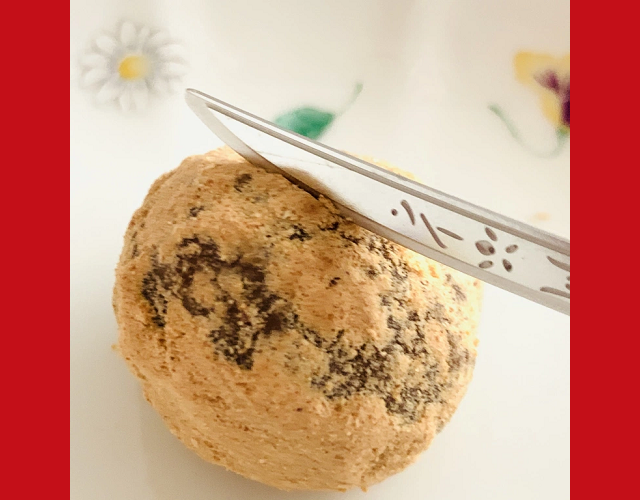
Hyorogan, part of the ninja and samurai diet, also get a modern, gluten-free version.
Modern Japan is an incredibly convenient place when you’re hungry. If you’re in any moderately sized town, you’re probably not very far away from a convenience store or a late-night ramen joint or beef bowl place.
Back in the old days, though, the restaurant industry wasn’t quite so robust. Nevertheless, busy ninja and samurai needed quick nourishment, and so when they feel their stomachs rumbling while on secret missions or by raging battlefields, they relied on hyorogan, pellets made of rice and various other ingredients. Sort of like a healthy donut hole, they were said to be filling and provide shadow warriors and swordsmen with a quick burst of energy.
Hyorogan show up frequently in historical novels and anime, but they’re not so easy to come by in present-day real-life Japan. Recently, though, we found out you can now buy them in Tokyo!
Megutama, a cafe in Tokyo’s Ebisu neighborhood, began selling hyorogan earlier this month. Eager to try this taste of Japan’s past for ourselves, we stopped by and picked some up for ourselves.
Megutama’s hyorogan come in two varieties, and we started our taste test with the Ganso (“Original style”), which comes in the red package.
The 540-yen (US$5) bag contains six hyogaran, made with six different ingredients: wheat flour, mochi powder, soba/buckwheat powder, white sesame, kinako (roasted soybean powder) and kibiko (millet powder). Together, they supply numerous vitamins (especially B1 and E), minerals, rutin, and even some protein.
Appearance wise, the hyorogan isn’t so different from a dango (Japanese dumpling). However, he texture is surprisingly firm.
▼ Though not so firm that you have to cut it with a knife; we just wanted to see what it looked like inside.
You’ll need to put some force into your chewing, but you’ll be rewarded but a comforting grainy taste with a hint of sweetness. In books and anime, characters are often shown reacting negatively to the taste of hyorogan, which works to establish it as something stoic warriors eat, but in actuality we’d happily eat these hyorogan even when we’re not cut off by enemy lines between us and other snacks.
Megutama’s second variety of hyoragan is a gluten-free variant which is also tailored for people with soba allergies. As such, the Kurogoma Kurumi Gluten-free Hyorogan (648 yen for a bag of six) boots wheat and soba flour from the ingredient list and replaces them with genmai (brown rice) flour and walnut (kurumi in Japanese) powder, plus black sesame.
Once again, they taste great, with the sesame making the strongest contribution to the flavor profile.
As mentioned earlier, the hyorogan are being sold by a cafe called Megutama. Ordinrily, Megutama is a place where customers can linger and browse through a collection of thousands of photo collections.
While the books don’t have a particularly historical focus, Megutama’s cooking staff enjoys recreating meals from bygone eras. However, with coronavirus concerns making many people choose to eat their meals at home, Megutama wanted to cook up something with some historical cachet that could be offered as a take-home item, which is why it’s begun making and selling these ninja dumplings. So we can now add hyorogan to so milk dessert and hoshi 20-year rice on the list of old-school Japanese foods poised for a comeback during the coronavirus outbreak.
Location information
Megutama / めぐたま
Address: Tokyo-to, Shibuya-ku, Higashi 3-2-7
東京都渋谷区東3-2-7
Open 11:30 a.m.-10 p.m. (weekdays), noon-10 p.m. (weekends, holidays(
Close Mondays
Website
Photos ©SoraNews24
● Want to hear about SoraNews24’s latest articles as soon as they’re published? Follow us on Facebook and Twitter!
[ Read in Japanese ]